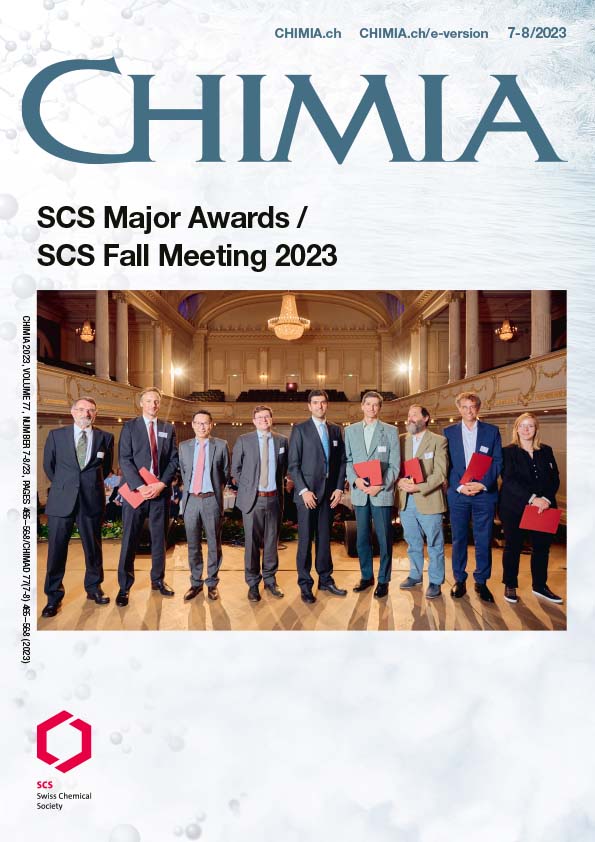Fuelling the Digital Chemistry Revolution with Language Models
Sandmeyer Award 2022
DOI:
https://doi.org/10.2533/chimia.2023.484PMID:
38047789Keywords:
Digital chemistry, Language models, Machine learning, Sandmeyer Award 2022, Synthetic Organic ChemistryAbstract
The RXN for Chemistry project, initiated by IBM Research Europe – Zurich in 2017, aimed to develop a series of digital assets using machine learning techniques to promote the use of data-driven methodologies in synthetic organic chemistry. This research adopts an innovative concept by treating chemical reaction data as language records, treating the prediction of a synthetic organic chemistry reaction as a translation task between precursor and product languages. Over the years, the IBM Research team has successfully developed language models for various applications including forward reaction prediction, retrosynthesis, reaction classification, atom-mapping, procedure extraction from text, inference of experimental protocols and its use in programming commercial automation hardware to implement an autonomous chemical laboratory. Furthermore, the project has recently incorporated biochemical data in training models for greener and more sustainable chemical reactions. The remarkable ease of constructing prediction models and continually enhancing them through data augmentation with minimal human intervention has led to the widespread adoption of language model technologies, facilitating the digitalization of chemistry in diverse industrial sectors such as pharmaceuticals and chemical manufacturing. This manuscript provides a concise overview of the scientific components that contributed to the prestigious Sandmeyer Award in 2022Funding data
-
Schweizerischer Nationalfonds zur Förderung der Wissenschaftlichen Forschung
Grant numbers 180544
Downloads
Published
2023-08-09
Issue
Section
Scientific Articles
License
Copyright (c) 2023 Antonio Cardinale, Alessandro Castrogiovanni, Theophile Gaudin, Joppe Geluykens, Teodoro Laino, Matteo Manica, Daniel Probst, Philippe Schwaller, Aleksandros Sobczyk, Alessandra Toniato, Alain C. Vaucher, Heiko Wolf, Federico Zipoli

This work is licensed under a Creative Commons Attribution 4.0 International License.
How to Cite
[1]
A. Cardinale, A. Castrogiovanni, T. Gaudin, J. Geluykens, T. Laino, M. Manica, D. Probst, P. Schwaller, A. Sobczyk, A. Toniato, A. C. Vaucher, H. Wolf, F. Zipoli, Chimia 2023, 77, 484, DOI: 10.2533/chimia.2023.484.







